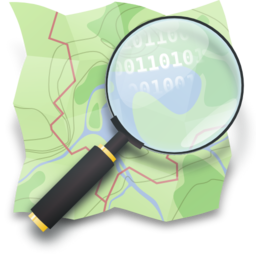I’ve added a new feature to WaterwayMap.org: A map showing where waterways end, i.e. a map of the ends-of-waterways ![]() .
.
It shows nodes which are “the end” of a waterway, i.e. where the water can’t go anywhere else. Uniquely, it calculates the total upstream length of waterway ways which end at a point. It uses the direction of OSM ways, and how they are connected. This should make larger mistakes more visible. Like the rest of WaterwayMap.org, data is updated daily, at the same time.
It’s normal for there to be ends, like when a river ends at a coastline. This will rightly show up on WWM:Ends. When a river empties into a lake, this will also show up, unless we’ve mapped a waterway through the lake. There’s active discussion on when & how to do that.
Merging & Splitting
When 2+ waterways come together, the upstream value is added together. When 2+ waterways split, the upstream value is split equally. This mostly works well, e.g. when a river splits through a side channel, and then rejoins.
If you have a small stream going into a large river, and it’s in the wrong direction, then half the upstream value from the big river will go off to the side stream. This is a mapping mistake, and this tool makes it easier to find them. e.g. way 962171457 is mapped as flowing out of the Nile, so it’s taking 17,000 km of upstream away! on wwm/ends. This direction should probably be reversed.
Conversely, this way is taking half (930 km) of the Shannon wwm/ends. I don’t think this should count as an “end”, but the mapping looks ok. WWM/ends excludes canals. I’m unsure if it’s possible to calculate the right value. Perhaps more advanced tag calculations. What do yous think?
I hope you enjoy this new map & we all improve OSM together. ![]()
See also
• a short description of how it works.
• News about WaterwayMap.org can be found on Mastodon/Fediverse (incl. Atom/RSS feed):
• This code is on Github: amandasaurus/waterwaymap.org. New issue reports are welcome.
• The programme which generates it is osm-lump-ways

